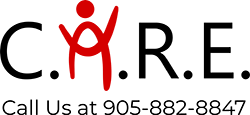
Knee Pain
Knee Osteoarthritis (OA)
Just like the hip, the knee is subjected to large weight bearing forces. As a result, the knee is susceptible to OA. This condition is characterised by degenerative changes in a joint that include joint space narrowing, cartilage destruction, and abnormal bony outgrowths. Sometimes injury, stress, genetics and weight can contribute.
Symptoms often include pain with walking, standing, bending, straightening, swelling, and weakness. OA cannot be reversed, however, physiotherapeutic exercises and modalities can help manage the symptoms and promote the longevity of the joint. Strengthening the muscles around the knee and hip is critical to prevent deterioration of symptoms. Modalities such as taping or knee braces can help patients with OA to return to activities and/or sports. Weight loss is also an important component of OA knee rehabilitation.
ACL (Anterior Cruciate Ligament)
The ACL is a ligament in the knee that helps connect the thigh bone (femur) to the shin bone (tibia). The ACL restricts the tibia from moving forward in relation to the femur. ACL injuries often occur when an athlete lands and pivots on a leg. For example a skier falls and his/her leg(s) become(s) forcefully thrown out forward by the ski(s).
Following the injury, swelling, stiffness and pain may ensure. Often there is also a sensation of uneasiness or instability. Depending on the severity of the tear, the patient’s age and level of physical function, surgery may be required. Physiotherapy can support your recovery from this injury by adding strength and support to the knee. If surgery is required you will need rehabilitation to restore the knee function. Early intervention is associated with better outcomes. Braces or taping may also be required depending on the level of activity in which the athlete wishes to participate.
Meniscus injuries
The meniscus of the knee is a cartilaginous material that covers the surface of the tibia (shinbone) that comes in contact with the femur (thighbone). The meniscus acts like a shock absorber in the knee joint as it helps disperse the forces to which the knee is exposed. It also provides lubrication for smooth movements. The meniscus can be injured by trauma, often associated with concurrent ACL injury, or by gradual degenerative aging. Symptoms often include clicking, locking and instability of the knee joint. Many cases of meniscus tear are successfully managed with physiotherapy. Bracing and taping may also be utilized to facilitate return to sports.
Patello-Femoral Pain Syndrome (PFPS)
Pain in the front of the knee can be a result of friction between the knee cap (patella) and the femoral condyles (Part of the thigh that comes into the knee). When the knee bends and straightens the patella moves in relation to the knee joint. If this tracking of the patella is not aligned well, then there may be pain. It is common in teenage kids due to growth spurts that may cause imbalance to the muscles of the thigh. In adults, PFPS is commonly associated with flat-footedness, weak hip and knee muscles. Typically there are no findings on imaging of the knee (xray, MRI). A thorough physiotherapy examination can identify the structures that are involved. For example, a muscle may need to be stretched or a muscle group may need strengthening. Taping, bracing and other modalities may be utilized to treat inflammation and pain.
